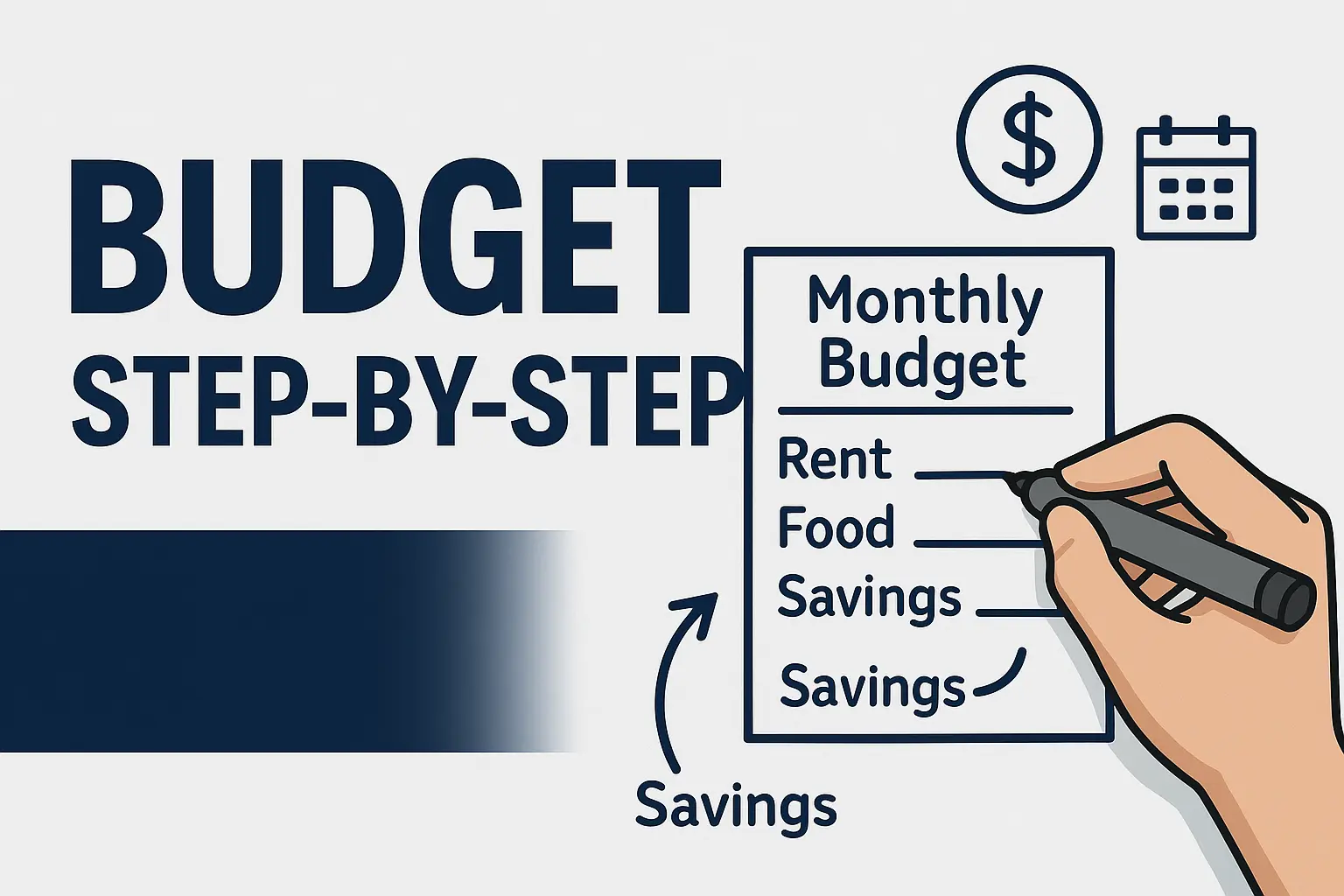
Living on a low income can be stressful, especially when you’re trying to stretch every dollar to cover essentials. But with the right strategies and mindset, it’s entirely possible to create a workable budget that helps you gain control over your finances, reduce stress, and even save for the future. In this guide, we’ll walk you step by step through how to budget on a low income—and stick to it.
Why Budgeting on a Low Income Matters
When money is tight, every financial decision counts. Budgeting helps you:
- Avoid overdraft fees and debt
- Prioritize essential expenses
- Save for emergencies or long-term goals
- Feel more in control of your money
Even if you earn less than the national average, a budget can help you make the most of your resources.
How to Make a Simple Monthly Budget – Step by Step
Learn how to take control of your finances with this quick and easy monthly budgeting guide. Perfect for beginners!
Step 1: Know Your Net Income
Before you can create a budget, you need to know exactly how much money you have coming in each month. This includes:
- Wages after taxes
- Government benefits (SNAP, SSI, unemployment)
- Child support or alimony
- Side hustle income
Write it all down so you have a clear starting point.
Example:
| Income Source | Monthly Amount ($) |
|---|---|
| Job (after tax) | 1,800 |
| Food stamps (SNAP) | 250 |
| Freelance cleaning | 200 |
| Total Income | 2,250 |
Step 2: Track Your Spending
Start by tracking every expense for at least 30 days. Write down even small purchases like snacks, coffee, or bus fare. Group your spending into categories such as:
- Rent or mortgage
- Utilities (electricity, water, gas)
- Food (groceries, eating out)
- Transportation (gas, bus, Uber)
- Health and medical
- Debt payments
- Entertainment
This will show you where your money is going—and where you can cut back.
Step 3: Separate Needs from Wants
On a low income, it’s vital to focus on needs before wants.
Needs:
- Rent
- Basic utilities
- Food
- Medication
- Transportation to work
Wants:
- Netflix
- Dining out
- New clothes
- Takeout coffee
Cutting back on wants doesn’t mean giving them up forever. But until you stabilize your finances, every dollar counts.
Step 4: Create a Realistic Budget
Use the 50/30/20 rule as a guide and adjust it based on your income level. For low income, you might try a 70/20/10 rule:
- 70% Needs
- 20% Savings & Debt Repayment
- 10% Wants
Sample Budget Breakdown (Monthly Income: $2,250)
| Category | % | Amount ($) |
|---|---|---|
| Needs (rent, food, etc.) | 70% | 1,575 |
| Debt/Savings | 20% | 450 |
| Wants (entertainment) | 10% | 225 |
Tip: Use a free budget calculator to plug in your numbers easily.
Step 5: Reduce Fixed Costs
Lowering recurring bills can make a big difference. Here are some ways:
- Housing: Get a roommate, move to a cheaper place, apply for housing assistance.
- Utilities: Use energy-efficient bulbs, unplug appliances.
- Phone: Switch to a cheaper prepaid plan.
- Internet: Negotiate or switch providers.
- Insurance: Shop around for lower car or health insurance rates.
Step 6: Cut Variable Expenses
- Food: Meal plan, buy generic, avoid eating out
- Transportation: Carpool, use public transit
- Entertainment: Use free local events, library, YouTube
Track these categories weekly and aim to reduce spending gradually.
Step 7: Build an Emergency Fund (Even Slowly)
Even saving $5 or $10 a week can add up. Try:
- Automating $10 to savings every payday
- Using a separate online savings account
- Saving coins or cash in a jar at home
Emergency funds prevent you from turning to credit cards or payday loans when something unexpected happens.
Step 8: Get Help if You Need It
You don’t have to do it alone. Use local or online resources:
- Credit counseling: NFCC.org
- Free food banks
- Utility assistance programs
- Financial literacy classes (local libraries, nonprofits)
Apply for all the assistance you qualify for—it’s not failure, it’s strategy.
Step 9: Use Budgeting Tools & Apps
Free tools can make budgeting easier:
- EveryDollar
- Mint
- YNAB (You Need A Budget)
- Goodbudget
Most link to your bank and show you where your money goes. Or use a printable budget worksheet from InvestinZone.
Step 10: Review and Adjust Monthly
Budgeting is not a one-time activity. At the end of each month:
- Review what you spent
- Compare to your budget goals
- Adjust for next month
Celebrate small wins. Did you save $50? That’s progress.
Final Thoughts: You Can Thrive on a Low Income
Budgeting isn’t about restriction—it’s about freedom. When you take control of your money, you gain peace of mind. Start small, stay consistent, and remember: even with a low income, you can build financial stability one step at a time.
“Do what you can, with what you have, where you are.” — Theodore Roosevelt
Free Budget Spreadsheet Download (Google Sheets)
Want to put this plan into action immediately?

This spreadsheet includes:
- Income and expense tracker
- Monthly breakdown with automatic calculations
- Graphs and visuals to help you understand spending
- Emergency fund tracker
- Debt repayment sheet
Use it, duplicate it, customize it—it’s yours.
Recommended Reading: